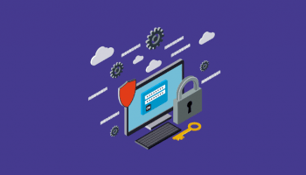Office 365 Conditional Access
Since the dawn of time, or at least the dawn of computers, logging into our computer resources has...


By now, Azure AD Conditional Access should no longer be unfamiliar to anyone in IT. As a refresher, it’s Microsoft’s solution for providing a flexible, condition-based, way of controlling access to (cloud) resources.
So, why write an article about it you may wonder? Well, I believe that organizations worldwide aren’t leveraging Conditional Access to the fullest. Personally, I feel there is a lot more to be gained from a better and more elaborate use of the feature; not just from the capabilities you gain, but also from how it fits into a bigger picture and approach, like e.g. Zero Trust.
Zero Trust is – like many other things – somewhat (over)hyped. It’s often misused or even abused. The latter is especially true when someone is trying to sell you something… Anything that can relate back to Zero Trust must be worth considering, buying… Let me put you immediately at ease: I am not trying to sell you anything, so what follows are my unbiased thoughts on the matter.
To me, Zero Trust is an approach to security. It’s a (set of) principle(s) that guides you along your path to a more secure environment. I was very happy to learn that NIST recently published a draft version of their take on Zero Trust; large parts of their Architecture and approach are similar to how I tend to look at it. In addition, it makes supporting your vision and approach a bit easier at times!
The concept of Zero Trust is not new and it’s definitely not the only architectural security concept out there. Similar concepts exist, albeit each with some (minor) differences in approach, terminology etc. Some popular alternatives are Google’s BeyondCorp or Gartner’s CARTA (Continuous Adaptive Risk and Trust Assessment).
Without going into too much theory, the bottom line for each of these frameworks is something along the following lines: Don’t trust anyone (identity) or anything (device) connecting to your environment/resources (connection).
As such, one could summarize the approach to zero trust in a couple of generic principles. The important part to note is that you don’t take anything for granted, ideally you would perform all of these for each connections/access request/etc. and you would also perform them continuously/regularly:
With the above principles in mind: how does Azure AD Conditional Access fit into all of this? If you take a look at NIST’s draft specification for a Zero Trust Architecture, it speaks of components called a Policy Engine and a Policy Administrator for which it gives the following definitions:
Both definitions fit the description of Azure AD and by extension also Azure AD Conditional Access to a T. Of course, you could have come to the same conclusion based on Conditional Access’ name as well, but having external validation (from none other than NIST) can be helpful.
Where is this rather long intro leading to? To show you that Azure AD Conditional Access is not just a feature that you turn on to e.g. force mobile devices towards using Outlook Mobile or something you do to enable Multi-Factor Authentication for your users. Of course, those are two very real uses cases for which Conditional Access is the way to go, but these use cases are only (a small) part of a bigger picture: establishing a more holistic way of looking at Zero Trust.
Besides the aforementioned use cases, Azure AD has the ability to leverage a lot more signals and apply (a lot) more logic before it grants (or denies) access to an underlying resource. In the grander scheme of Zero Trust, health attestation of a device and subsequently using that attestation to make an informed decision on whether or not to allow an incoming connection is fundamental; especially if you want to allow a flexible strategy on whom can connect to what type of data and what device(s) can be used to do so.
Ultimately, your goal is (or should be) to allow users to consume resources with as much flexibility as you are willing to accept risk for. In theory, you could grant access to any device unless you cannot reasonably guarantee the data can be kept safe if you do. In such case, you would either want to limit or even refuse access all while keeping the decision-making process dynamic and ensuring you are assessing each of the signals that contribute to your conditions as the connections to resources happen.
So, what does this look like in terms of policies etc.? Although the specifics may vary from a high-level, your (basic) set of policies might include the following all whilst making use of Azure AD Conditional Access:
It doesn’t need to stop there… The combinations and capabilities are virtually limitless. However, it doesn’t mean that Conditional Access will solve all of your challenges. Sometimes, additional solutions and controls provided through solutions such as Cloud App Security are required to go above and beyond what is (currently) feasible with Conditional Access. For example, MCAS can reason over connections and data as they are happening, whereas Conditional Access hands off access to the underlying resource once its decision has been made; it will only reassess the condition at the next authentication (which could be as little or as much as 1 hour after the initial authentication).
Even though Zero Trust has been introduced as a concept many moons ago, there is still a lot to be improved and a lot to be gained from even the most basic functionalities in Conditional Access. In the meantime, Microsoft continues to add more functionalities so that, over time, new scenarios are unlocked as new signals, conditions and controls become available.
Does this mean that, by the time you’ve been able to implement a couple of policies like the ones I’ve described earlier, you can consider to be at the panacea of Zero Trust? Unfortunately not. As I mentioned, Zero Trust is not an end state or a goal by itself. It’s a journey. Today, Conditional Access may solve the ability to verify identities and devices, and perhaps it provides the flexibility to evaluate dynamically with more signals such as information from (external) Threat Intelligence feeds, but there’s still a lot of work to be done when it comes to legacy resources, such as servers etc… That is where solutions like the Azure AD App Proxy come into play. But that is for another article!
How are you using Conditional Access today? Would love to hear your feedback!
ENow’s solution is like your own personal outage detector that pertains solely to your environment. ENow’s solution monitors all crucial components including your hybrid servers, the network, and Office 365 from a single pane of glass. Knowing immediately when a problem happens, where the fault lies, and why the issue has occurred, ensures that any outages are detected and solved as quickly as possible.

Michael Van Horenbeeck is a Microsoft Certified Solutions Master (MCSM) and Exchange Server MVP from Belgium, with a strong focus on Microsoft Exchange, Office 365, Active Directory, and a bit of Lync. Michael has been active in the industry for about 12 years and developed a love for Exchange back in 2000. He is a frequent blogger and a member of the Belgian Unified Communications User Group Pro-Exchange. Besides writing about technology, Michael is a regular contributor to The UC Architects podcast and speaker at various conferences around the world.


Since the dawn of time, or at least the dawn of computers, logging into our computer resources has...


Securing your data in Office 365 can be a challenging task. The problem is that...